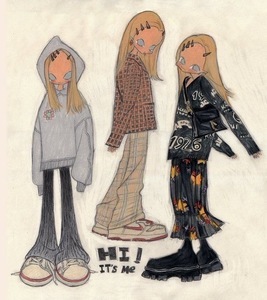35088680
Jan. 19 2022 Science Assessment
Description
No tags specified
Flashcards by penguin tdoong, updated more than 1 year ago
More
Less

|
Created by penguin tdoong
almost 3 years ago
|
|
Resource summary
| Question | Answer |
| What have we learned about cup systems? | We have learned that a cup's mass and temperature can change/increase or decrease based on the environment. We also learned that a lid helps maintain the liquid temp. |
| Can anything else, besides matter, go into, out of, or through the closed cup system? | Radiation through light and heat waves could go through the closed cup system and energy. |
| What have we determined is not leaving or entering the system? | All states of matter do not leave the cup system or enter since it is a closed system. |
| FORMULA FOR TRANSMITTED LIGHT | % Transmitted Light = Amount of transmitted light (lux) _____________________________________________ Amount of Incoming light (lux) |
| FORMULA FOR REFLECTED LIGHT | % Reflected Light = Amount of reflected light (lux) _____________________________________________ Amount of incoming light (lux) |
| What does meeasuring the mass of an open system provide evidence of when experimenting with hot water? How does it relate to phase change? What does measuring the mass of a closed system provide evidence of when experimeting with ice cold water? How does it relate to phase change? | Measuring the mass of an open system when experimetning with hot water provides evidence that the water can lose mass as the evaporated water leaves the cup system. This relates to phase change because you can observe how the hot water (which is a liquid) evaporates and converts to water vapor and becomes a gas. Measuring the mass of a closed sytem with ice-cold water provides evidence that due to the warmer outsdie climate, the ice-cold water will start to warm and condense. However, as the evaporated air rises to escape the cup, it will be blocked by the solid lid. Therefore, the water vapor will build upon the lid and form into a liquid. This relates to phase change because you can observe how the ice-cold water warms up and slowly evaporates to a gas. Then, it'll build upon the lid, convert back to a liquid, and conclusively fall back into the warming water. |
| What is Temperature? | Temperature is "a measure of the average kinetic energy in the particles of a substance" which basically means a measure of how fast the particles in a substance move. |
| What is Heat? | Heat is the energy transferred when two objects or systems are at different temperatures. |
| How does heat flow and how do you measure it? | Heat always flows from hot to cold (never the opposite) and can be measured in Joules (J). |
| SUMMARY OF JAMES JOULE READING: | In 1850, a scientist named James Joule conducted an experiment to figure out why certain liquids got really hot while they were pushed and pressed through machinery. He built a device and one of the components called a paddle would turn and stir the water inside. The thermometer would then measure the temp of the water for any changes. With this, Mr.Joule found out that when the weight fell quickly, the paddle spun faster, and the water temp also increased. Consequently, if the weight fell slower the paddle spun slower and the temp of the water increased slowly. |
| SUMMARY OF FOOD COLORING LAB: | What similarities and differences do you notice between the hot water cups and cold water cups? The similarities I notice between both cups is that they turn entirely green over time. Some differences are that with the cold, you could see the individual strings of color dissolving slowly. With the hot, it distributed more evenly and quicker. |
| What is Kinetic Energy? | Kinetic Energy is the measure of the movement of particles. |
| What is Density? | Density is how much space an object/substance takes up. |
| What is Room Temperature? | Room temp is the equilibrium of the temp in a room. |
| Mixture & Expansion: | Mixture: A substance made from combining other substances. ~ Expansion: When something becomes larger. |
| WHAT WE HAVE FIGURED OUT: | - The individual particles have different amounts of kinetic energy, even though the gas is at a given temp. - The kinetic energy of individual particles changes as the particles collide with one another. - The temp of the gas stays the same as the intial temp that we set. - The total kinetic energy of all the particles increases when we increase the temp of the gas and/or when we increase the number of particles. |
| What is Heat Transfer? What are the three types? | Heat transfer is when something hot transfers its energy to something cold. Heat transfer must require a temperature difference to occur. The three types of heat transfer are conduction, convection, and radiation. |
| What is Conduction? | Conduction requires contact between the objects involved and a temperature difference between the two. |
| What is Convection? | Convection is when heated molecules move from one place to another, bringing heat with them. ("the transfer of energy by the physical movement of a fluid") |
| What is Radiation? | Radiation is the transfer of energy in the form of EM (electromagnetic) waves. (Example: Sun radiating heat to Earth) |
| What is Heat Transfer? | The movement of thermal energy from a hotter to a colder object. (3 Most Common: Conduction, Convection, Radiation) |
Want to create your own Flashcards for free with GoConqr? Learn more.
